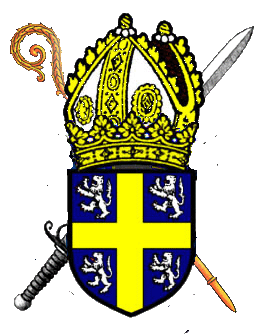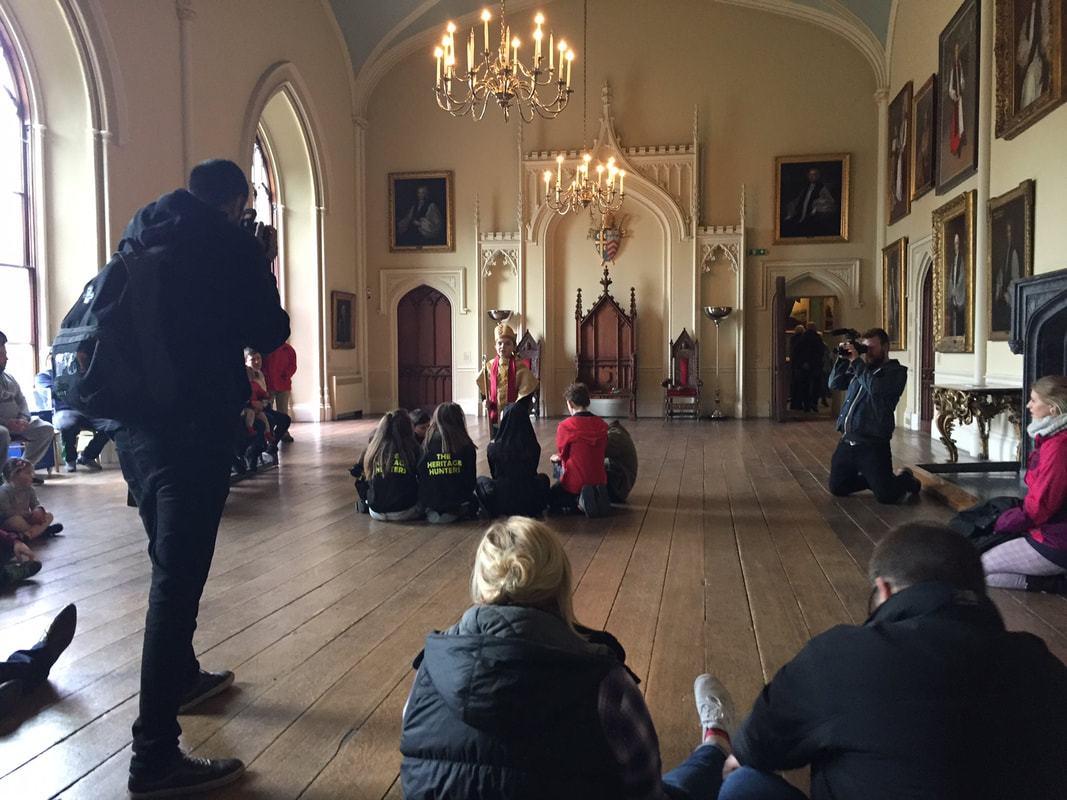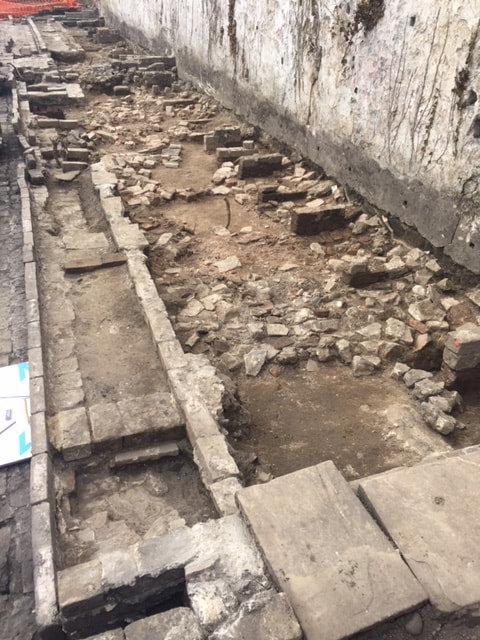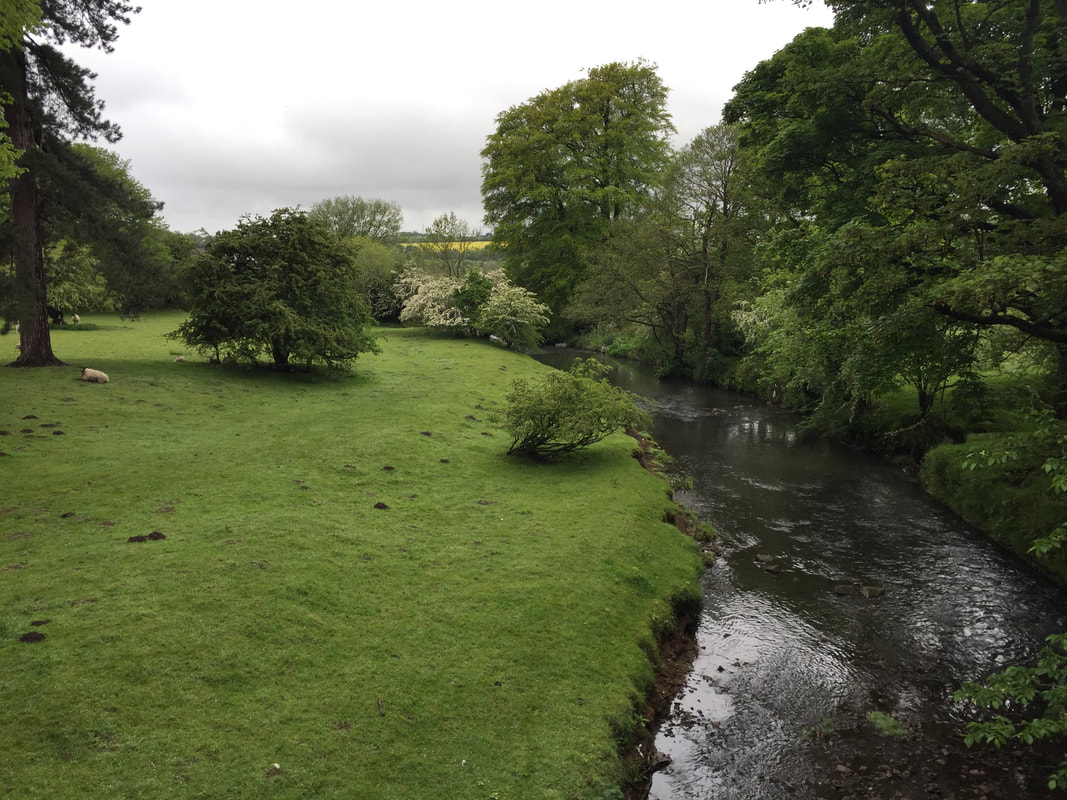|
One of the many highlights of my year abroad in England was the time I spent at Auckland Castle, in the northeast town of Bishop Auckland. As an intern, student, and volunteer, I was witness to the early stages of a truly remarkable regeneration project that focuses on cultural heritage to revitalize the economically-deprived, surrounding town. Whether I was assisting with a school visit in the Throne Room or excavating in the Walled Garden, I relished the chance to be part of such an ambitious project that preserves the heritage and archaeology of the Castle, using them as a catalyst for social change. With over 900 years of history, Auckland Castle is the country home of the Prince Bishops of Durham. A title that, from its inception in 995 to when it was dissolved in 1832, carried with it the religious powers of a bishop and the secular powers of an earl. This combination of secular and religious power can be seen in the crest of the Bishop of Durham, which features a bishop’s mitre and a ducal coronet.
n the early 2000s, the Church of England began considerations to sell a set of paintings by Spanish artist Francisco de Zurbaran, a collection which was purchased by Bishop Trevor in the eighteenth century and remains an integral part of the Castle’s history. Justification for selling the paintings was that that sale itself would pay for ten priests, among many other church expenses. The announcement of the sale elicited a public outcry, with over 80 percent of locals opposing the proposed sale. Luckily for the castle and the Zurbaráns, Jonathan Ruffer, a private client fund manager, was so moved that he made an offer for the paintings. To him they were, and still are, “the only lamb the North East has got”(link article that says this). After tough negotiations, the Church Commissioners agreed to the sale of the paintings to Ruffer – but there was a catch. Ruffer could purchase the paintings and set up a charity for them, but he must also take the castle. Thus, Ruffer created the Auckland Castle Trust to manage and act as stewards for the castle and the paintings. With his purchase of the estate, Ruffer made it very clear that the heritage would serve the people. The Trust has included the residents of Bishop Auckland in every step of the project, and intends to include them further when the castle reopens in 2018. Efforts to engage with the local community include training and volunteering opportunities, apprenticeships and jobs, and providing possibilities for local business to take advantage of the future influx of visitors. This anticipated tourism boost, with thousands of additional visitors a year would funnel money into the local economy.
few rusty nails. While I always enjoy excavating and finding exciting artifacts, my favorite part of the experience was getting to talk with the other volunteers and hear about why they decided to get involved. Many of the volunteers had already participated in Castle events and there were a few retirees who give their time to several organizations in the area. Even some of my friends at the university came out for a few days that summer to hone their excavation skills. While the excavation took place before the Castle closed for the two-year renovation project, I could already see how the local community was getting involved with the heritage of Auckland Castle. Not only were they able to learn about and visit the Castle – they were able to take part in the actual archaeological investigation into the Castle’s history. The community regeneration project at Auckland Castle shows how heritage, archaeology, and museums can facilitate greater social and economic change. By involving the local community in the history and archaeology of the castle, as well as providing employment, training, and business opportunities, Auckland Castle is rightly putting the focus of heritage in the community. For more information about Auckland Castle and the exciting projects going on, please visit AucklandCastle.org About the author: Sophie Lange is an intern at AITC and a recent graduate of Durham University where she received a MA in International Cultural Heritage Management. Sophie currently works for a government contractor on an immigration project, and occasionally works for a CRM firm in Montgomery County.
0 Comments
Leave a Reply. |
|




